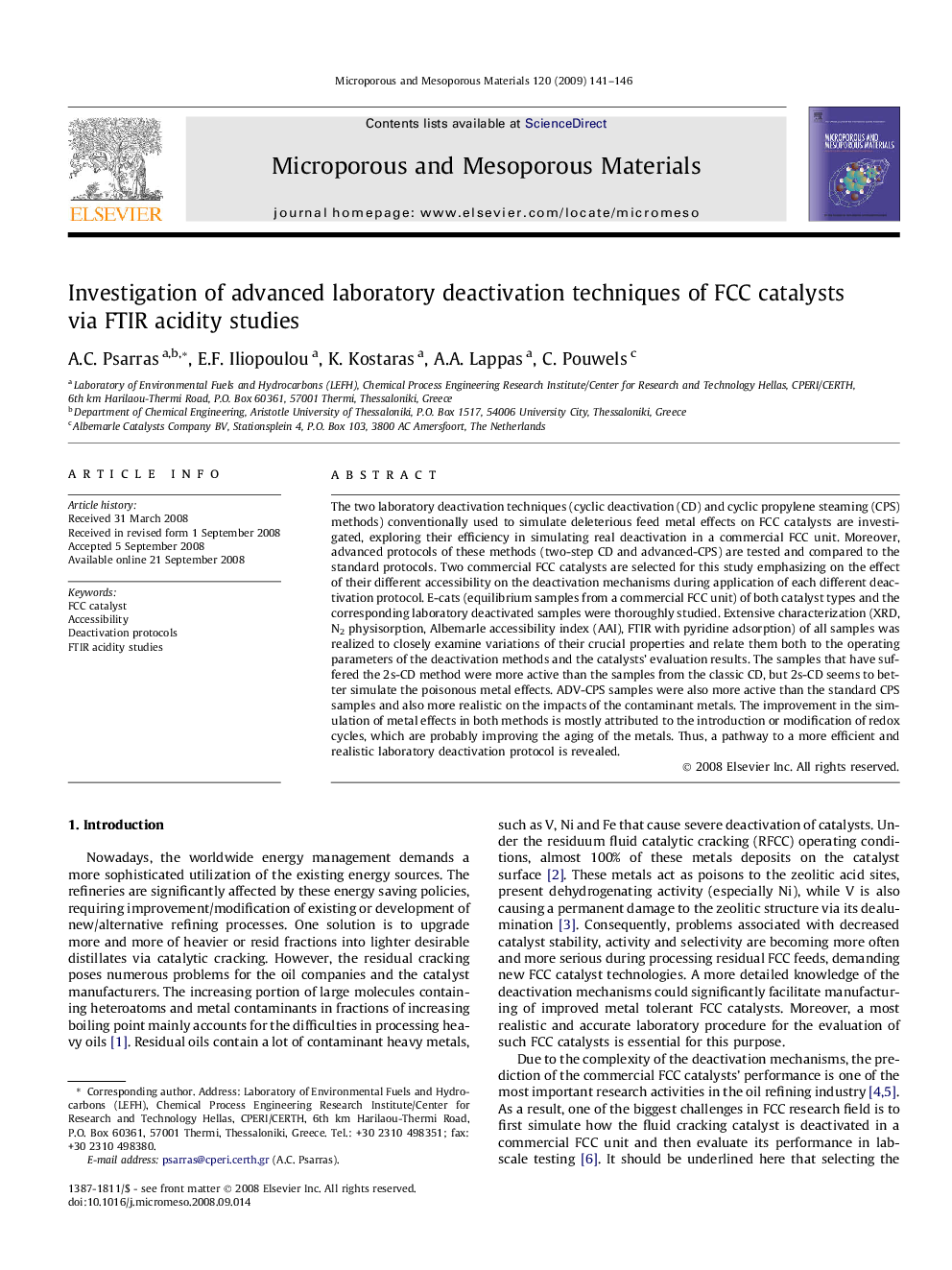| کد مقاله | کد نشریه | سال انتشار | مقاله انگلیسی | نسخه تمام متن |
|---|---|---|---|---|
| 76346 | 49138 | 2009 | 6 صفحه PDF | دانلود رایگان |

The two laboratory deactivation techniques (cyclic deactivation (CD) and cyclic propylene steaming (CPS) methods) conventionally used to simulate deleterious feed metal effects on FCC catalysts are investigated, exploring their efficiency in simulating real deactivation in a commercial FCC unit. Moreover, advanced protocols of these methods (two-step CD and advanced-CPS) are tested and compared to the standard protocols. Two commercial FCC catalysts are selected for this study emphasizing on the effect of their different accessibility on the deactivation mechanisms during application of each different deactivation protocol. E-cats (equilibrium samples from a commercial FCC unit) of both catalyst types and the corresponding laboratory deactivated samples were thoroughly studied. Extensive characterization (XRD, N2 physisorption, Albemarle accessibility index (AAI), FTIR with pyridine adsorption) of all samples was realized to closely examine variations of their crucial properties and relate them both to the operating parameters of the deactivation methods and the catalysts’ evaluation results. The samples that have suffered the 2s-CD method were more active than the samples from the classic CD, but 2s-CD seems to better simulate the poisonous metal effects. ADV-CPS samples were also more active than the standard CPS samples and also more realistic on the impacts of the contaminant metals. The improvement in the simulation of metal effects in both methods is mostly attributed to the introduction or modification of redox cycles, which are probably improving the aging of the metals. Thus, a pathway to a more efficient and realistic laboratory deactivation protocol is revealed.
Journal: Microporous and Mesoporous Materials - Volume 120, Issues 1–2, 1 April 2009, Pages 141–146